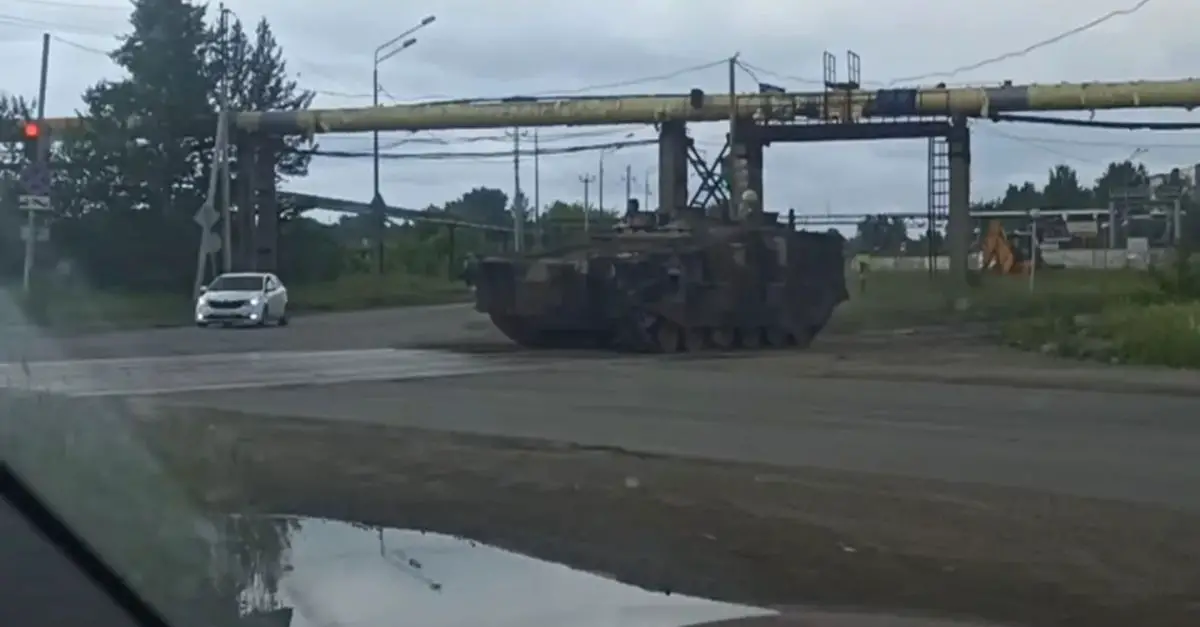Breaking News
New Russian IFV based on T-72 spotted on testing area.
A new heavy infantry fighting vehicle (IFV), reportedly based on the T-72 main battle tank platform, has been spotted in Nizhny Tagil, Russia. This brief video footage, captured near the Uralvagonzavod test site, where Russian T-72, T-90, and T-14 Armata tanks are produced, has sparked interest and speculation among defense analysts.
Follow Army Recognition on Google News at this link

Unnammed vehcile near Uralvagonzagod in Russia (Picture source: OSINT)
This tracked infantry fighting vehicle resembles the T-15 IFV but features a different tracked base with only six road wheels per side, in contrast to the T-15 chassis on the Armata platform.
The development of this new armored vehicle is likely driven by the need to mass-produce heavy infantry fighting vehicles to supply the Russian military forces. On the battlefield, armored vehicles face a multitude of threats, and heavy armor can provide essential protection to the crew.
The choice of the T-72 chassis reflects the Russian defense industry's focus on cost-effectiveness, scalability, and ease of maintenance in the context of ongoing economic challenges.
Opting for the T-72 platform makes sense given the current state of the Russian defense industry. It allows for simpler production and maintenance processes while providing the necessary protection in combat scenarios. This decision seems to address the need to optimize limited resources and leverage existing infrastructure. Despite significant losses, the simplified production and maintenance of T-72s allow the Russian army to maintain a steady flow of armored vehicles to the front, crucial for supporting their ongoing offensives in areas like Donbass. Additionally, the T-72 has been produced in large quantities, making the platform conversion very advantageous for Russia.
The emergence of this new infantry fighting vehicle underscores Russia's ongoing efforts to improve its fleet of armored vehicles in response to the demands of modern warfare, currently experienced in Ukraine. On the ground, it is noted that soldiers suffer from a lack of so-called liaison vehicles, which can transport them from point A to point B while ensuring speed, mobility, and protection.


























